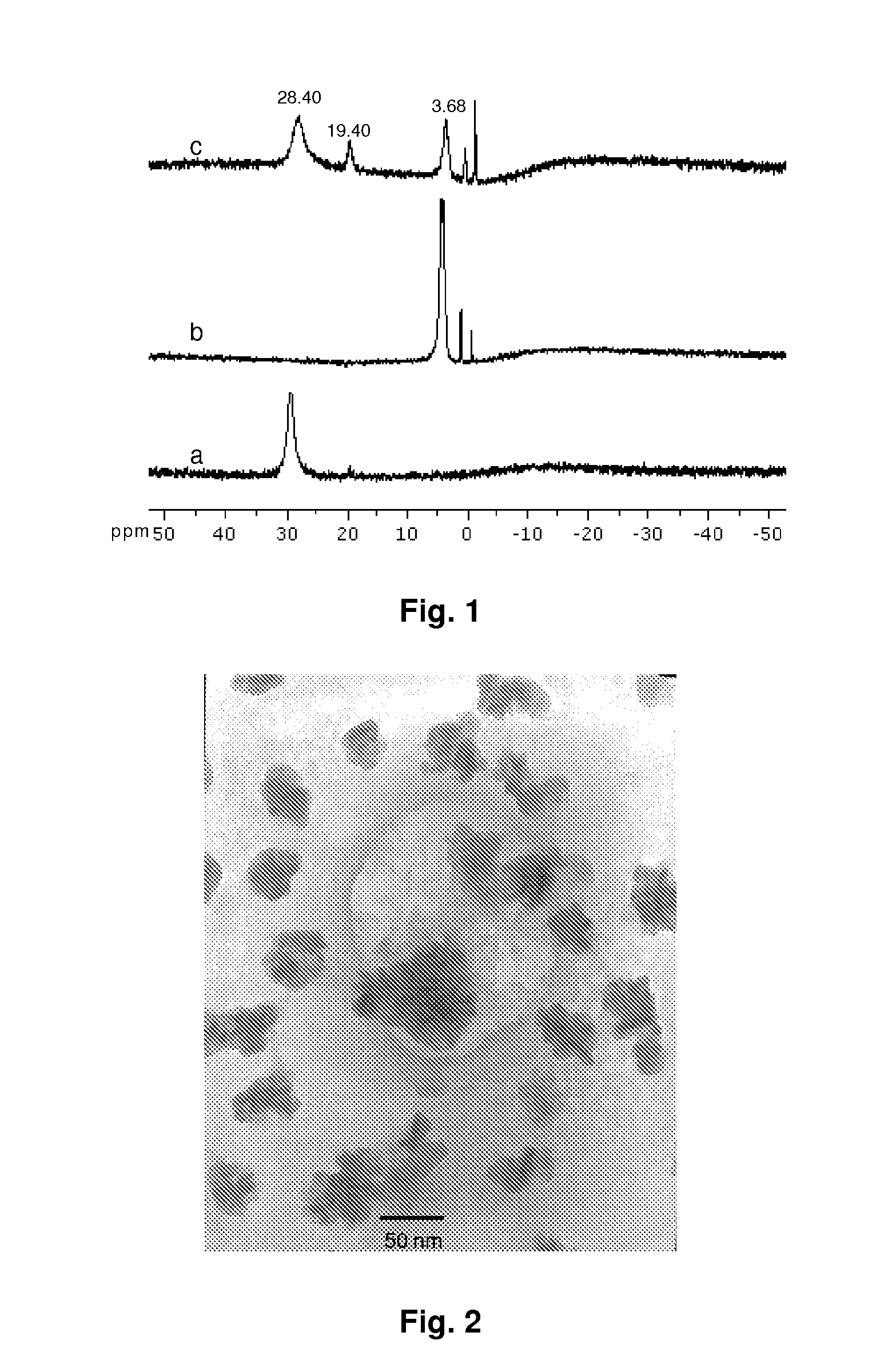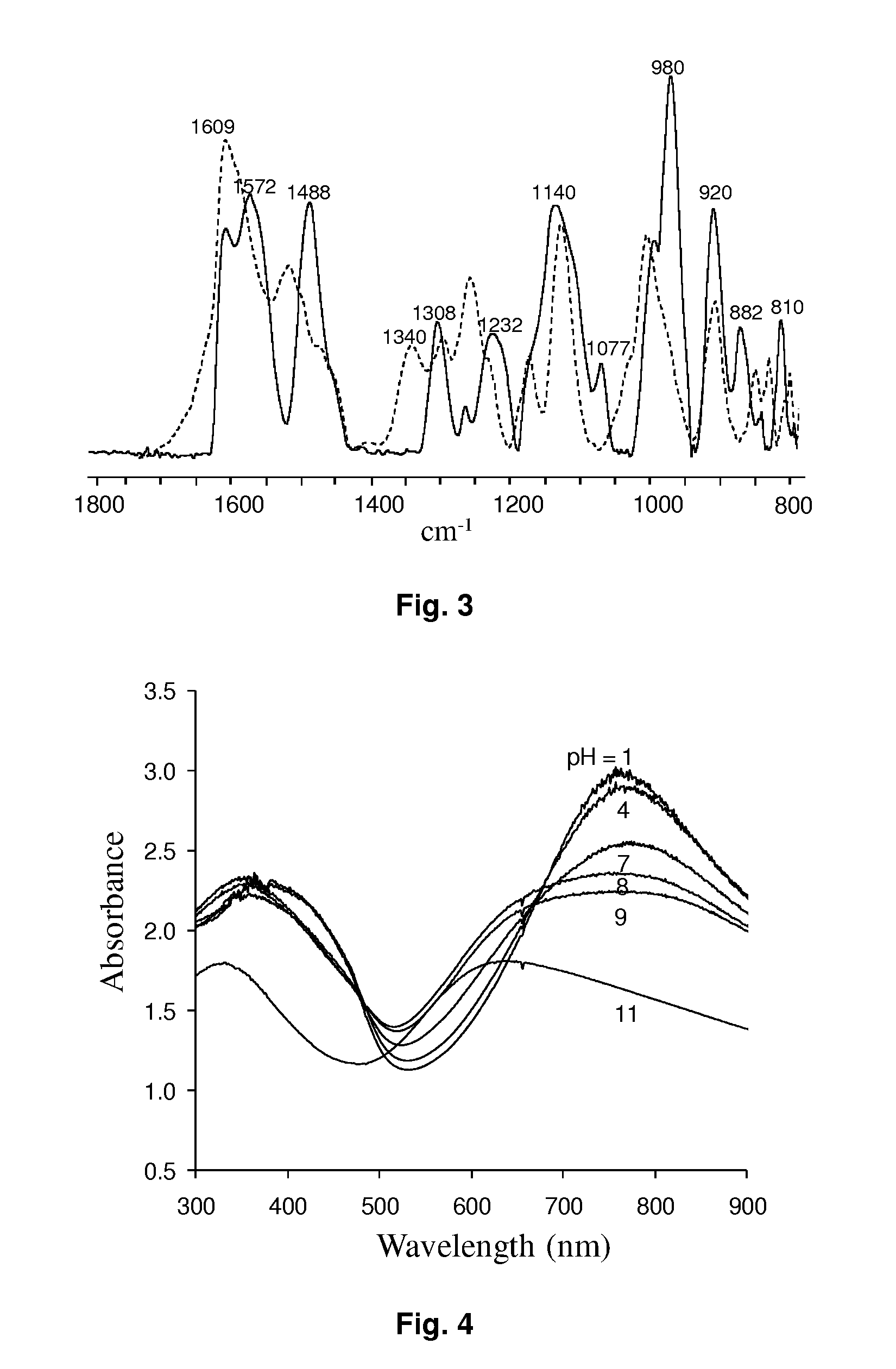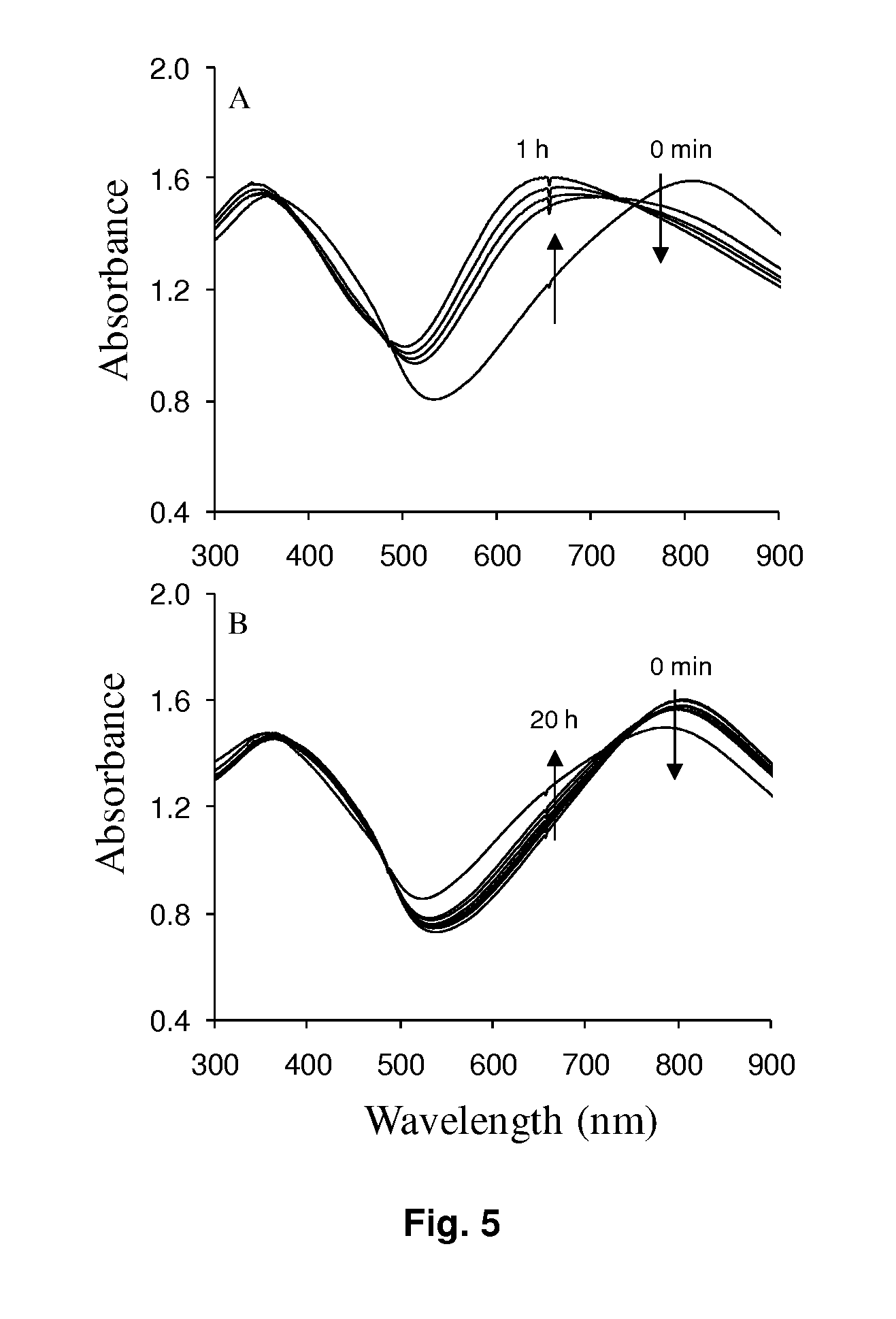Self-doped polyaniline nanoparticle dispersions based on boronic acid-phosphate complexation
- Summary
- Abstract
- Description
- Claims
- Application Information
AI Technical Summary
Problems solved by technology
Method used
Image
Examples
example 1
PABA / Phosphate Dispersions
Materials. 3-Aminophenylboronic acid hydrochloride salt (3-APBA) and ammonium persulfate were purchased from Aldrich Chemical Inc. Sodium fluoride, potassium chloride, sodium phosphate and phosphoric acid (85%) were purchased from Fisher Scientific. Bulk distilled water was filtered then ion exchanged to yield 18.2 MΩ.cm quality water using Milli-Q-Academic A10 (Millipore Corporation). Indium-doped tin oxide coated glass slides (ITO, 6±2 Ω / square) were purchased from Delta Technologies Ltd. Gold interdigitated array microelectrodes (IDAs) were obtained from Biomedical Microsensors Laboratory at North Carolina State University. Each of these arrays contained 2.8 mm×0.075 mm gold electrodes with a gap width of 20 μm that had a total exposed area of 0.069 mm2 TEM formvar-carbon coated copper grids (400 mesh) were purchased from CANEMCO-MARIVAC.
Synthesis of PABA / phosphate dispersions. PABA dispersions were synthesized using 10 mM (3-APBA) (monomer) and 50 mM so...
example 2
Poly(Anilineboronic Acid)-Based Anticorrosive
Materials. 3-Aminophenylboronic acid hydrochloride salt (3-APBA), Sure / Seal™ anhydrous methanol and 1-propanol, and ammonium persulfate were purchased from Aldrich Chemical Inc. Sodium fluoride was purchased from Fisher Scientific. Anhydrous ethanol was purchased from Commercial Alcohols Inc. Bulk distilled water was filtered then ion exchanged to yield 18.2 MΩ.cm quality water using Milli-Q-Academic A10 (Millipore Corporation).
Polymerization. PABA nanostructures were synthesized using 10 mM (3-APBA) (monomer) and 50 mM sodium fluoride in anhydrous alcohols (methanol, ethanol and 1-propanol) by adding 10 mM ammonium persulfate (oxidizing agent). Monomer with sodium fluoride and oxidizing agent were ground separately using mortar and pestle, and then oxidizing agent (ground powder) was added at once into the solution containing monomer and sodium fluoride. Polymerization of 3-APBA was not observed in the absence of fluoride. The minimum on...
PUM
| Property | Measurement | Unit |
|---|---|---|
| Particle size | aaaaa | aaaaa |
| Fraction | aaaaa | aaaaa |
| Dispersion potential | aaaaa | aaaaa |
Abstract
Description
Claims
Application Information
 Login to View More
Login to View More - R&D Engineer
- R&D Manager
- IP Professional
- Industry Leading Data Capabilities
- Powerful AI technology
- Patent DNA Extraction
Browse by: Latest US Patents, China's latest patents, Technical Efficacy Thesaurus, Application Domain, Technology Topic, Popular Technical Reports.
© 2024 PatSnap. All rights reserved.Legal|Privacy policy|Modern Slavery Act Transparency Statement|Sitemap|About US| Contact US: help@patsnap.com










